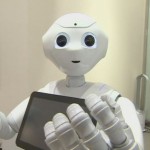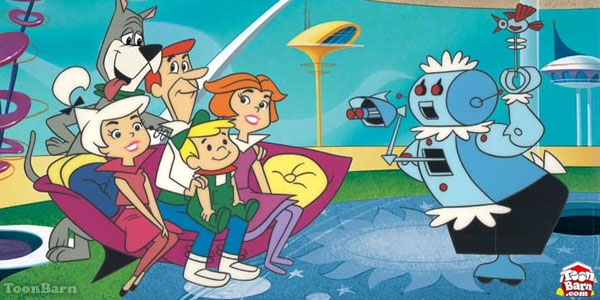I’m old enough to remember the The Jetsons cartoon show on TV. Technology is our servant. Life is wonderful.
Fast forward to today. Life online. Living through our devices. Alone Together. Is technology our servant or master?
The upsurge in robotics
 It’s a tricky business, living and working with technology. We’re in a tech soup, to be sure; witness the recent press: Japan investing in robotic workforce to regain status as world’s top manufacturer.
It’s a tricky business, living and working with technology. We’re in a tech soup, to be sure; witness the recent press: Japan investing in robotic workforce to regain status as world’s top manufacturer.
“Pepper (pictured right) is the world’s first emo robot and represents a huge leap in artificial intelligence. It can read facial expressions, voice tones and body language and then respond.” Whoah!
On the same front,The Evolution of Robotics (via Quid) offers a clever interactive on the change and expansion of robots, over the last 50+ years.
The trend to ‘more technology’ isn’t about to slow down.
Human solutions for the automated workplace
If we aspire to both technology and authentic relationships, what in heck should we be doing, as a response to the inevitable (more and more) technology in our lives?
Tom Staunton (@TomStaunton84) has some stellar ideas. A careers adviser in the UK, his piece, Automatation is Voldemort: Robots in ContactPoint (a portal for career development practitioners) looks at robots, careers and social justice. It offers up political and personal solutions, in response to the robotic workplace.
On the political front, “changing the structure”, Staunton suggests:
- strengthening workers’ rights; make redundancy harder to claim
- elongating education; funding public education as an ongoing process over a lifetime
- ongoing career development services; if education is lifelong, then career development services needs to follow suit
Staunton’s structural observations sit well with me. Politics is about how we organize our society. If its justice we want, we need to talk politics.
On the personal solution front, supporting individuals, Staunton suggests:
- moving away from matching to adapting; as a career development strategy
- encouraging engagement with technology; e.g., how will you make do, working beside all those robots!?
- focusing on higher order skills; there are some things a robot can’t do
The human-machine interface has absorbed me for a long, long time. Most recently, its played out in my virtual collaboration e-course; a course attentive to the differences between virtual and in-real-life communications. I expect it’ll absorb me for quite a while to come; another collaborative journey. 🙂
What other core strategies (e.g., survival, adaptation) come to mind for collaborating with the robots?


Speak Your Mind